Friday, September 24, 2010
Have Your Heard - Preparedness Month!
Tuesday, September 21, 2010
Vancouver Cops and Kids Day
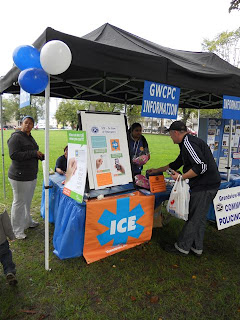
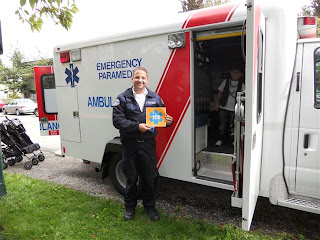
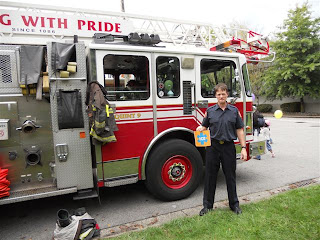
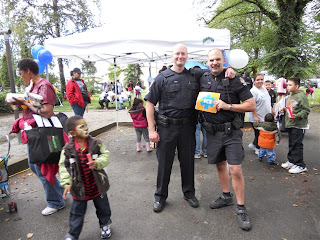
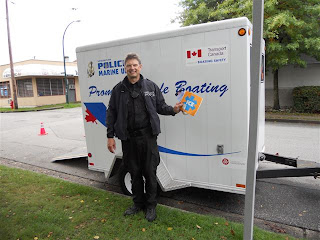
Vancouver continues to unveil many of the events designed to educate and create more awareness for residents about personal preparedness and using ICE.
This past weekend involved the Police, Fire and EMS along with the Vancouver Community Policing organization VACPC in a yearly public event that brings the public in contact with their public safety crews.
Vancouver's Cops and Kids 2010 was another "fantastic" success - this time ICE played a roll.
We look forward to the continued adoption of ICE throughout the Province of British Columbia and to all the other provinces of Canada!
Tuesday, September 14, 2010
Emergency Action Plans - Evacuation
OSHA tries to simplify the process and we blogged about that previously here.
As a component part of your company or organization's Emergency Action Plan you can use ICE as a tool to help immediately identify any/all documents, information, routes and pertinent equipment or resources using this simplified method.
Does your facility receive visitors? If so how do you orient them to the safety and evacuation procedures ? How do you handle subcontractors with new employees? Short term visitors?
You are likely going to say they are escorted around the facility right? When that system breaks down are you visitors left to their own devices? Orienting visitors upon their signing in can take from less than a minute to five minutes in many cases and is considerably more beneficial than if you did nothing.
ICE can be a cohesive and consistent identifying symbol of safety and preparedness in your facility - and elsewhere.
Try it out - overcome complacency. See our file uploads on Twitter as well.....
Visit: www.ice4safety.com
GOOD DRIVERS, JUST DRIVE!
Still wondering why all the commotion about "distracted driving"? Where have you been?
People are dropping all around us on the roadways because they are not paying attention to what they should be doing - and that is driving their vehicle - be it a smartcar or a bus.
Ok, well our friend Jay Anderson from Stay Alive Just Drive who has been at this effort before all the others jumped on board puts it all in perspective for us in his letter copied below.
Use it as a safety tool box discussion with your drivers, your family, your congregation or at roll call.....but please read it.
Please....don't kill others or yourself by doing something stupid like texting and driving.....
Just Drive!
To wit:
GOOD DRIVERS, JUST DRIVE!
By Jay Anderson
Perplexed at how to broach the subject of poor driving habits often displayed by law enforcement officers, a recent conversation with a friend helped shed light on the subject. He was on his way back to Fort Myers from Lehigh Acres and in typical Southwest Florida fashion it was raining. Like many long time drivers who are often unsure, he asked if it was the law to turn your headlights on in the rain. I quickly cited Florida Statutes - 316.217: When lighted lamps are required; paragraph (b): During any rain, fog, or smoke. He then proceeded to tell me he followed a marked law enforcement vehicle, leading the pack without his headlights on in the torrential downpour.
Quickly coming to the defense of my friends and co-workers in law enforcement, I explained that the one would only hope that our law enforcement officers (LEO’s) would set the example. Unfortunately, the truth is LEO’s are a microcosm of society. A weapon and a badge does not make one a good driver. Practicing good driving habits makes one a good driver regardless of what you do for a living.
Given the fact that everyone knows someone who has lost their life or suffered serious injuries in a crash, it’s not surprising that statistics show 97 percent of all crashes are directly attributed to driver error. Yes that’s correct driver error.
Driving is unquestionably the most dangerous activity we participate in on a daily basis. Not surprisingly, a motor vehicle is treated by American’s as an equalizer, making a 100 lb woman identical to a 300 lb man when they’re behind the wheel. Essentially driving is the only activity we participate in that makes us all the same.
Safe driving is easy. It may require a little thinking and some practical application, but once again it is easy. The key is to “JUST DRIVE!” every time you’re in the driver’s seat. Sounds simple enough but obviously it’s harder than it looks.
Ironically, the same people who leave the church parking lot on Sunday morning, pull out on the highway and start violating traffic laws, yet they would never rob a bank, shoplift, or steal from their place of employment. What makes their behavior acceptable? Why are they the first to complain when they receive a citation, even though many are often habitual offenders.
Now the ball continues to roll as we add distracted driving to the mix. Many states have passed laws that prohibit hand held cell phone use and text messaging while operating a motor vehicle.
Are more laws the answer? Are there existing laws that can be amended?
The answer to both questions is yes. The 2010 Florida Statutes contains a law in Chapter 316, STATE UNIFORM TRAFFIC CONTROL that can easily be applied to distracted driving.
316.1925 – Careless driving
1. Any person operating a vehicle upon the streets or highways within the state shall drive the same in a careful and prudent manner, having regard for the width, grade, curves, corners, traffic, and all other attendant circumstances, as to not endanger the life limb or property of any person. Failure to drive in such a manner shall constitute careless driving and a violation of this section.
2. Any person who violates this section shall be cited for a moving violation, punishable as provided in chapter 318.
As you can see this law addresses the behavior of distracted drivers, and is a moving violation, with a $159 fine and 3 points on your license.
Our legislators would be wise to consider amending the law to include prohibiting the use of hand held cell phones and text messaging while operating a motor vehicle.
Ultimately, the person behind the wheel or handlebars is responsible for the safe and lawful operation of the vehicle.
That’s why we remind everyone: SAFE DRIVING IS NOT EXPENSIVE, IT’S PRICELESS!
Saturday, September 11, 2010
Bus Accident - Call for Preparedness Noted!!

Carmichael said tracking down passengers’ personal information has been a challenge as the passenger manifest contains only email addresses."
Vancouver Adopts ICE - Mayor Proclaims ICE Week September 9-15, 2010
City of Vancouver and emergency responders support ICE campaign for personal preparedness
September 9, 2010 - A simple card for a wallet or a backpack, or a cell phone contact entry, is a key tool for Vancouver first responders In Case of Emergency.
The City of Vancouver today joined the Vancouver Community Policing Centres, the Vancouver Police Department (VPD), Vancouver Fire and Rescue Services and BC Ambulance Service to launch the ICE campaign to help first responders reach a person’s designated contact or translator if that person is unable to communicate.
“The City does a lot to prepare Vancouver for emergencies, and now there is another tool that people can use to prepare themselves,” said Mayor Gregor Robertson. “Vancouver is taking a leading role among Canadian cities to spearhead this important safety initiative and I encourage our citizens to take part."
"When every minute counts, because it could be your last, you would want your loved ones contacted immediately. Recording your ICE information makes that possible," says VPD Sergeant Ken Athans.
“Making contacts available using ICE not only helps us, but can help save lives,” says Captain Gabe Roder with the Vancouver Fire and Rescue Services. “With schools back in session, it’s a great way to protect your children.”
“BC Ambulance Service supports the ICE program as an easy and effective way to let paramedics and other emergency personnel know who to contact in an emergency,” says Superintendent Bob Alexander of the BC Ambulance Service.
ICE was developed in 2005 by a United Kingdom paramedic who found that most accident victims had cell phones, but first responders didn’t know which number to call if the patient was unable to communicate. The idea spread internationally and has been endorsed by cities such as New York and by the International Association of EMTS and Paramedics.
The ICE campaign was started to lessen the time it takes responders without clear contact information - an average of almost six hours in New York - to reach families following emergencies.
In a multicultural community like Vancouver, the ICE contact can be a translator who will assist the victim by providing information to first responders.
For young children, seniors and those without cell phones, business sized ICE cards are a valuable tool that can be carried in a wallet or backpack. Plans are to distribute the wallet cards to schools as well as agencies working with homeless people throughout Vancouver.
Thursday, September 9, 2010
Vancouver, BC Canada Adopts ICE - 2010
WELCOME VANCOUVER,BC CANADA!!
3 Million people to be introduced to ICE by the City of Vancouver!
Visit the City of Vancouver's Official Website http://www.vancouver.ca/
When is your City going to adopt ICE?
Official Press Release Here:City of Vancouver and emergency responders support
ICE Campaign for Personal Preparedness
A simple card for a wallet or a backpack, or a cell phone contact entry, is a key tool for Vancouver first responders In Case of Emergency.
The City of Vancouver today joined the Vancouver Community Policing Centres, the Vancouver Police Department (VPD), Vancouver Fire and Rescue Services and BC Ambulance Service to launch the ICE campaign to help first responders reach a person’s designated contact or translator if that person is unable to communicate.
The campaign promotes the internationally recognized acronym ICE, short for In Case of Emergency, as a name that can be programmed into a cell phone or found on a wallet card to assist first responders to find an appropriate contact. Over the past six months, the Vancouver Association of Community Policing Centres has spearheaded bringing the campaign to Vancouver.
“The City does a lot to prepare Vancouver for emergencies, and now there is another tool that people can use to prepare themselves,” said Mayor Gregor Robertson. “Vancouver is taking a leading role among Canadian cities to spearhead this important safety initiative and I encourage our citizens to take part."
"When every minute counts, because it could be your last, you would want your loved ones contacted immediately. Recording your ICE information makes that possible," says VPD Sergeant Ken Athans.
“Making contacts available using ICE not only helps us, but can help save lives,” says Captain Gabe Roder with the Vancouver Fire and Rescue Services. “With schools back in session, it’s a great way to protect your children.”
“BC Ambulance Service supports the ICE program as an easy and effective way to let paramedics and other emergency personnel know who to contact in an emergency,” says Superintendent Bob Alexander of the BC Ambulance Service.
ICE was developed in 2005 by a United Kingdom paramedic who found that most accident victims had cell phones, but first responders didn’t know which number to call if the patient was unable to communicate. The idea spread internationally and has been endorsed by cities such as New York and by the International Association of EMTS and Paramedics.
The ICE campaign was started to lessen the time it takes responders without clear contact information - an average of almost six hours in New York - to reach families following emergencies.
In a multicultural community like Vancouver, the ICE contact can be a translator who will assist the victim by providing information to first responders.
For young children, seniors and those without cell phones, business sized ICE cards are a valuable tool that can be carried in a wallet or backpack. Plans are to distribute the wallet cards to schools as well as agencies working with homeless people throughout Vancouver.
Wednesday, September 8, 2010
ICE in Your Vehicle - Example

First Aid Kit Basics
How many times have you heard the media pundits tell you that in order to be prepared you should have a "first aid kit" with your emergency supplies.
We are going to help you define what some agencies and the media have been generally reluctant to do. You can make adaptations as you see fit and as your skill level dictates...but first some thoughts on that ...
Practical Considerations:
Everyday kits come in many sizes - for biking, ATV, car, boating, camping, job etc..
The gear in the kit may be used by others that may be more skilled to use them than you are.
Many kits found in stores are inadequate for more than a simple emergency.
You might be called upon to use this kit many times during a disaster.
Constructing your own first aid kit (DIY) is a part of the training.
In an extended emergency (30 Days+) medical assistance may not be readily available.
Good kits will cost some money. We suggest that if you can - build your own. You may consider more extended disaster gear to have on hand to supplement your first aid kit for a long haul.
Having as much first aid training and reference materials on hand are important for long term emergencies or when you are sheltering in place. Certification is required for the everyday use of some of these materials....if your life is in danger you should not be concerned about that.
Learn how to do things in an emergency - if you get help, great - if not, saving your own life or that of a family member is what matters.
Suggested Home First Aid Kit 2-4 Person
First Responder Kit Bag or Fishing Tackle Bag or Specialty Bag/Tool Bag or Large Day Pack
Spray Saline or Wound Wash Bottle or Sterile Saline Liter Bottles (2) **
EpiPen - Prescription Required (2)
Personal Prescriptions Marked in Sealed Bag - Current Med List Completed
Foam Sam Splints "Pocket Cast" - Hand/Wrist Version (9")
Hemostatic Dressing/Bandage Combination - Quick Clot- Celox (4) **
Vinyl gloves that fit you (12 pair)
Vaseline Impregnated Gauze Pads (4) or Asherman Chest Seal &
Sterile Aluminum Foil Roll (1)
Providone Iodine Wipes/Swabs/Gauze (12)
Sterile Dressings 4x4's (12)
Sterile Dressings (aka Gauze Pads) 2x2's (12)
Multi-Trauma Dressings Large 12x30" (2)
Roll Gauze - 2" x 4yds Kling/Kerlix or similar Conforming Bandage (12)
Roll Gauze - 4" x 4yds Kling/Kerlix or similar Conforming Bandage (12)
Combination "SurgiPad" Trauma Dressings 8x7.5" (6) or Thick Feminine Hygiene Pads **
Assortment of "Band Aid" type adhesive bandages **
Large 8x8 Sterile Burn Gel Dressings (4) **
Instant Cold Packs (4)
Surgical Suture Kit (Military) with extra sutures (1) **
CPR Rescue Breathing Device (1) or Face Shields (2)
Roll Bandage Tape 1" (3)
Bandage Scissors - Large Medic Style (1)
Penlight (1)
Flashlight - Or Headlamp LED Lithium Powered (1)
Spare Set of Lithium Batteries for lights (1)
Chemical Lights - Bright White 30 Minute (4) **
Emergency Mylar Rescue Blanket (2) **
Triangle Bandages with Clips/Safety Pins 40x40" (6)
Air Resuscitator Bag - Disposable - Adult (1) (Training Required)
Esophageal Airways - Child & Adult (Restricted Items)
Activated Charcoal Suspension - Poison Absorbent 120ml (1)
Aspirin or Quick Release Crystals Single Dispenser Pouches (10)
Blood Pressure Cuff and Stethoscope (Learn how to use it)
Waterproof Note Pad - Write anywhere Pen with Clip attached to bag
Medical Skin Marker - Black (1)
Ammonia Inhalants Package (1)
A & D Ointment or Vaseline Tube (1)
Bulb Syringe (1)
Eye Wash Solution (1)
Tweezers (1)
Large Disinfectant Hand Wipes (24)
Bio-Hazard Bags - Gallon ( 4)
Star of Life Symbol Designating Kit as a First Aid Kit
Dental Emergency Kit - Complete Sealed (or make your own)
Ziplock Freezer Bags (for avulsions - amputations)
Antihistamine Spray (1)
Triple Antibiotic Ointment Tube (1)
Antifungal Ointment (1) Double for Warm Humid Climates
Emergency "911" Phone - Charged & Programmed with Emergency Numbers Only
Safety eyeglasses with reading lenses or MedShields Disposable Eye Protection
Moleskin Patches for Foot Blisters (1)
Super Glue Tubes - Small (Cyanoacrylate) (4)
Hibiclens Skin Cleanser (8oz) (1)
Butterfly Bandages (12)
Antimicrobial Topical Gel - Handwash 6-8 oz (1)
Silver Sulfadiazine Cream SSD (Silvadine) 50 Gram tube (1)
Zinc Oxide Tube 2oz USP - Skin Protectant
Glucose Tablets - Roll of 10
Spray Bandage (1)
Oral Electrolyte Packs (2-3)
Duct Tape - Small Roll (1)
Tincture of Benzoin - Hardens Skin - Prevents Blisters
Medical Emergency Contact Forms and Current Medications List from http://www.ice4safety.com/
Inspection Tips: Note the Expiration Dates on Contents using Sharpie Marker Pen
Include a First Aid Kit Contents List and Note Expirable Items Clearly!
Learn how to do these things yourself NOW http://tinyurl.com/36qs2c
Online reference sources: http://www.buyemp.com/
Make sure to have a name tag with your contact info attached and mark all the gear inside you can because someone may permanently "borrow" your kit.
** Or as many as you can afford for other kits or replacements for when used.
Thursday, September 2, 2010
My Name is Earl....

Just not the sitcom ..... This one is now a Cat 3 down from a Cat 4 and with Tropical Storms.
Optimal time for preparation has passed as evacuation orders are being given for outlying areas.....would you be ready?
Typical interviews with the "person on the street" leaving the big box store with cases of bottle water confirms that some people at least heed the advance notice but not soon enough. Why put yourself in a position to rely on bottled water when you can have much more manageable storage options.
Preparedness savvy types that reside in the cross hairs of this storm already have a month's supply of water/food on hand to start (3 gallons per day per person minimum) realizing that the 3 for 3 mantra of the government relief agencies is a bit deficient in that many such emergencies will extend beyond those 3 days. Then what?
Some best bets for water storage are military/marine water containers (Scepter Brand), 5 gallon size treated with Iodine, Chlorine or Liquid Oxygen for longer term storage.
Ceramic / Carbon water purifier devices prepositioned with your water stores will ensure the safety and quality of your emergency water supply. Store it out of the sunlight in a cool place. UV purifiers can be used for your backpack evac bag along with iodine or chlor-floc tabs.
10-15 of these jugs will take up some room but offer some portability and a means of sharing if that is in your plan. $10-25 per jug get expensive as well. Free and clean food grade 5 - 6 gallon pails sealed up could work - don't forget your pail top removers (99 cents at Lowe's paint department).
Options include various other sized containers like 15-30-55 gallon drums which can weigh in around 250 - 470 pounds. Waterbobs can be used in your tub and filled up shortly before needed....inexpensive (http://www.campingsurvival.com/)
Barrels are hard to move and hand powered pumps or racking equipment would be required in a power out situation. We have blogged about this before.....use the search function here....
www.emergencyemail.org for more up to the minute weather/emergency info
Food stores next......